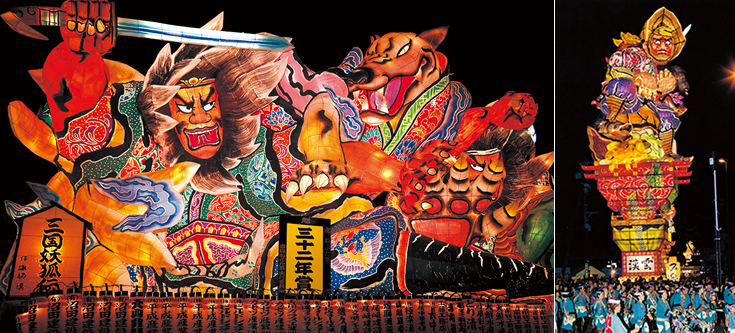niponica is a web magazine that introduces modern Japan to people all over the world.
2014 No.14

To read the e-book you need to have JavaScript enabled in your browser and a free Flash Player plug-in from Adobe Systems Inc. installed.
Splendor and Sparkle in Japanese Culture

Summer Festivals Sparkle with Color
Summer in Japan is a time of many festivals, some dating from the ancient practice of driving away evil spirits, some focused on Buddhist ceremonies (o-bon), a time to honor one’s ancestors in mid-August. Decorative dashi floats light up the warm night air, and the spirits of the dead are welcomed along with the Shinto gods and the Buddha. The celebrations and rituals, passed down from one generation to the next, add light and color to people’s lives, raising excitement to fever pitch in the already hot summer.
Riverside entertainment, now a tradition
Sumida River Fireworks Festival, Tokyo
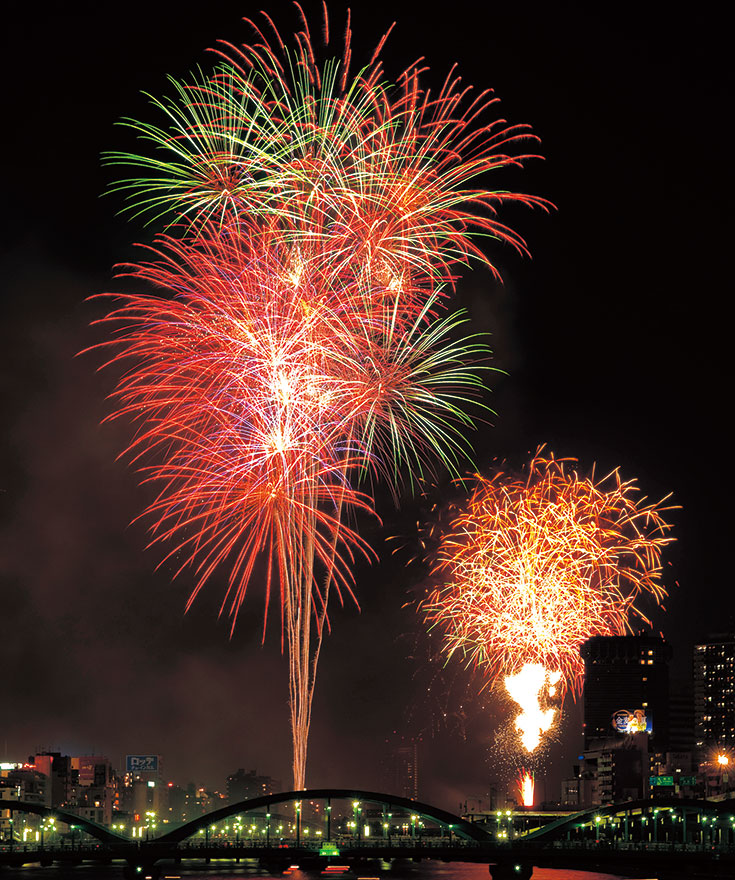
Launching fireworks into the night sky provides a fun time for everyone. The custom is said to have started on the Sumida River in the 18th century in the Edo period, as part of a festival to honor people who died in epidemics, or to pray for protection from evil. That was the beginning of Japan’s development of distinctive ways to coordinate colors and express changing moods with fireworks. (Photo courtesy of Aflo)
Elegant Imperial Court culture lives on
Gion Festival, Kyoto
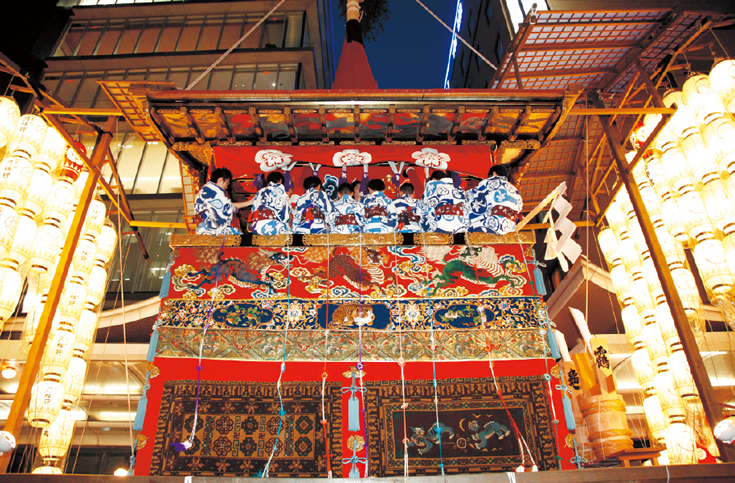
Yasaka Shrine’s annual festival lasts for the entire month of July. Yamaboko floats like the one above decorated with gorgeous fabrics come to life in the light of chochin lanterns. (Photo courtesy of Aflo)
Giant colorful lanterns for mid-summer nights
Nebuta Festival, Aomori
Heroes of legend are depicted in many colors on huge paper lanterns. They light up the night streets, pulled on heavy floats during this bold and brash festival. There are many Nebuta festivals in the Tohoku region (the northern part of Japan’s biggest island, Honshu)—the best known are in Aomori Prefecture, especially the ones in the cities of Aomori (left) and Goshogawara (right). (Photos courtesy of Aflo)
Flames light the return journey of the dead
Gozan Okuri-bi, Kyoto
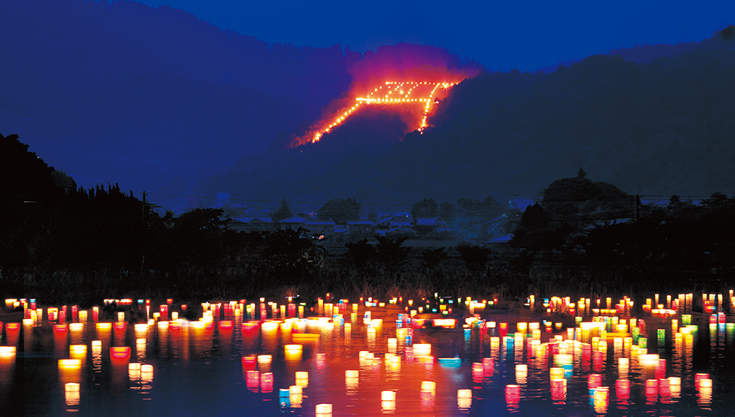
Every year on the mountain slope, firewood is laid in the shape of a written character or illustration, then set alight. This is a traditional farewell to the souls of the dead who have visited for a short while. The photo shows a conflagration in the shape of a torii shrine gate, as seen from Hirosawa-no-ike Pond. Below those flames are illuminated lanterns drifting on the pond. Together they create a fantastic floating world. (Photo courtesy of Aflo)
Fanciful decorations for a city
Tanabata Festival, Sendai
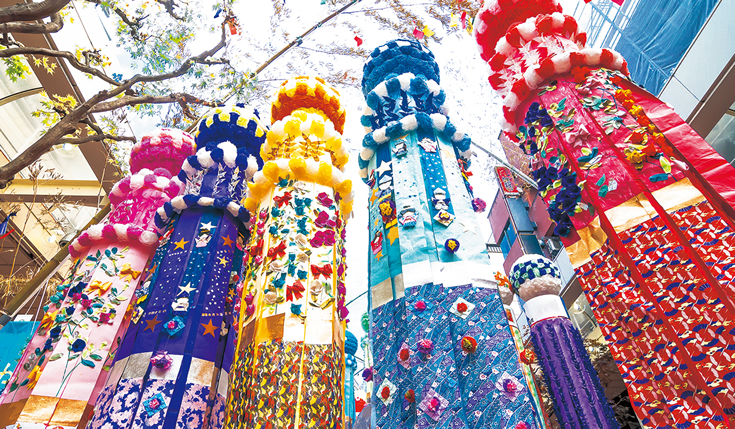
Legend tells us that the star-crossed lovers Hikoboshi and Orihime can get together only once a year. The Tanabata Festival in Sendai City, Miyagi Prefecture, celebrates their annual reunion in a big way for three days, beginning on August 6. People write their wishes on fancy paper strips (tanzaku), then tie them to thin bamboo poles. These, together with colorful washi paper decorations (fukinagashi), become immense streamers decorating the city. (Photo courtesy of pixta)
Dance of the golden lanterns
Yamaga Toro Festival, Kumamoto Prefecture
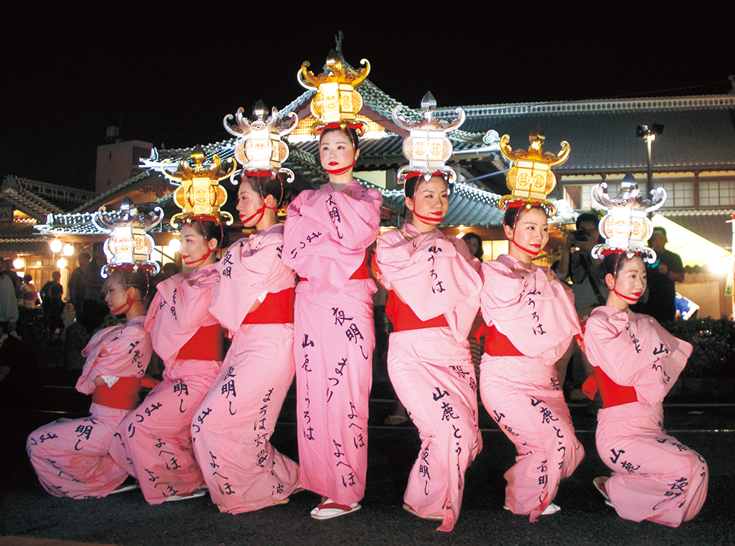
Yamaga City in Kumamoto Prefecture has an old tradition of decorating lanterns during the o-bon festival. About 60 years ago at festival time, local women began wearing lanterns on their heads while dancing parade style. The lanterns, covered with gold or silver washi paper, are now illuminated with battery-powered LED bulbs.



